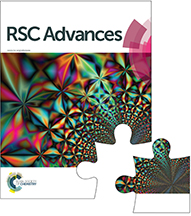For a new journal, RSC Advances has already seen significant successes:
- The first articles were published just 16 weeks after the journal was announced in April 2011
- It was the first chemistry journal to use topic modelling technology to automatically classify articles into one or more of 12 subject categories.
- 2000 articles were published by November 2012, with the journal moving to weekly issues
And now this journal is pushing the boundaries again.
From Issue 1 of 2014, RSC Advances is moving to article-based publishing, with articles assigned page numbers and published in an Issue in Progress as soon as they are in their final (fully edited and formatted) form.
As an author, this means you will receive your RSC Advances page numbers much faster.
And as a reader, you can now decide how you’d like to view articles, with the options of ordering the issue by article type, pagination, subject, or date published.
But that’s not all – the next level of topic modelling technology has just been introduced, so you can easily drill down to the topics most relevant to your research. For example, the energy category is now subdivided into eight sections, covering: biofuels & biomass; biotechnology; fossil fuels; electrochemical energy; hydrogen; materials & nanotechnology; nuclear power; and solar energy. Other subject categories have between seven and sixteen sub-categories – you can view them here.
Plus you can now select subject-specific table of content alerts – taking you straight to the most relevant articles.
Visit the RSC Advances homepage to explore these new developments – and if you have any comments, please contact us.





















![Mosquito-pupae-and-larva-underwater_shutterstock_134180213_300[1]](https://blogs.rsc.org/ra/files/2013/10/Mosquito-pupae-and-larva-underwater_shutterstock_134180213_3001.jpg)

![GA[2]](https://blogs.rsc.org/ra/files/2013/09/GA2.gif)
![GA[1]](https://blogs.rsc.org/ra/files/2013/09/GA1.gif)